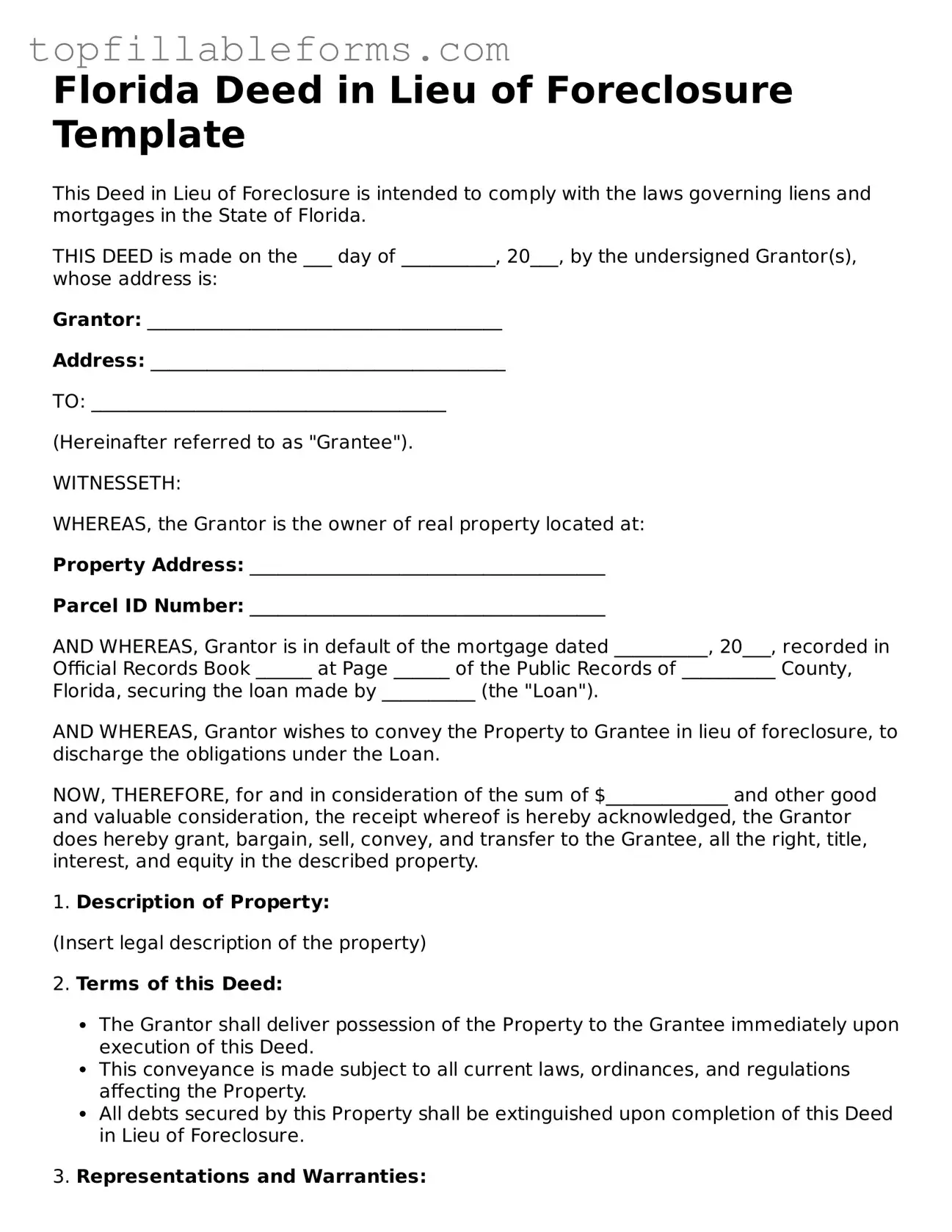Florida Deed in Lieu of Foreclosure Template
This Deed in Lieu of Foreclosure is intended to comply with the laws governing liens and mortgages in the State of Florida.
THIS DEED is made on the ___ day of __________, 20___, by the undersigned Grantor(s), whose address is:
Grantor: ______________________________________
Address: ______________________________________
TO: ______________________________________
(Hereinafter referred to as "Grantee").
WITNESSETH:
WHEREAS, the Grantor is the owner of real property located at:
Property Address: ______________________________________
Parcel ID Number: ______________________________________
AND WHEREAS, Grantor is in default of the mortgage dated __________, 20___, recorded in Official Records Book ______ at Page ______ of the Public Records of __________ County, Florida, securing the loan made by __________ (the "Loan").
AND WHEREAS, Grantor wishes to convey the Property to Grantee in lieu of foreclosure, to discharge the obligations under the Loan.
NOW, THEREFORE, for and in consideration of the sum of $_____________ and other good and valuable consideration, the receipt whereof is hereby acknowledged, the Grantor does hereby grant, bargain, sell, convey, and transfer to the Grantee, all the right, title, interest, and equity in the described property.
1. Description of Property:
(Insert legal description of the property)
2. Terms of this Deed:
- The Grantor shall deliver possession of the Property to the Grantee immediately upon execution of this Deed.
- This conveyance is made subject to all current laws, ordinances, and regulations affecting the Property.
- All debts secured by this Property shall be extinguished upon completion of this Deed in Lieu of Foreclosure.
3. Representations and Warranties:
- The Grantor represents that the title to the Property is free and clear of any liens or encumbrances, except as disclosed.
- The Grantor acknowledges having the authority to execute this Deed.
IN WITNESS WHEREOF, the Grantor has executed this Deed on the date first above written.
Grantor Signature: _________________________
Printed Name: _________________________
Witness Signature: _________________________
Printed Name: _________________________
STATE OF FLORIDA
COUNTY OF ________________
Before me, the undersigned authority, personally appeared ________________, who is known to me or who has produced __________________ as identification, and who executed this Deed in Lieu of Foreclosure.
Given under my hand and official seal this ___ day of ______________, 20___.
______________________________
Notary Public
My Commission Expires: _______________
